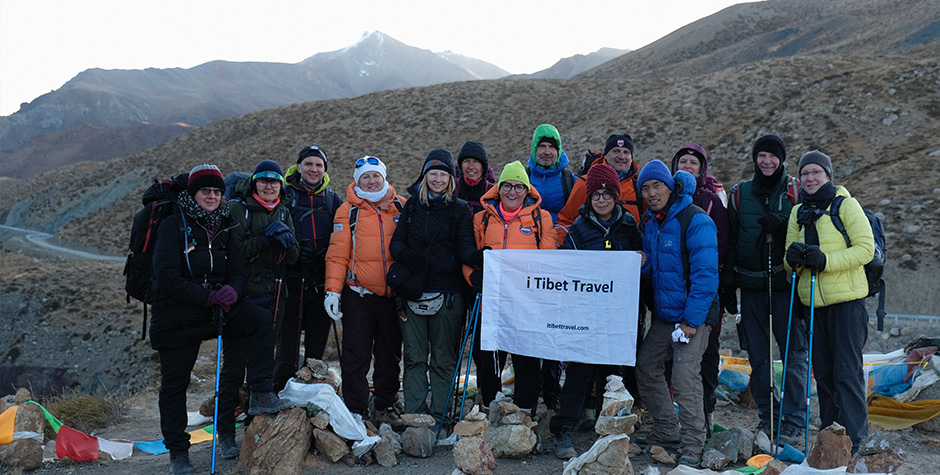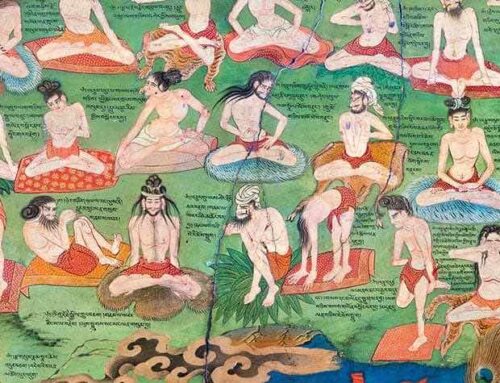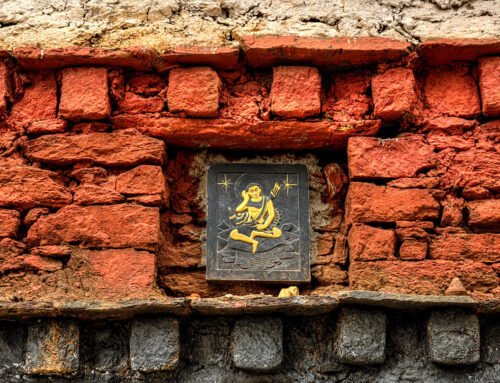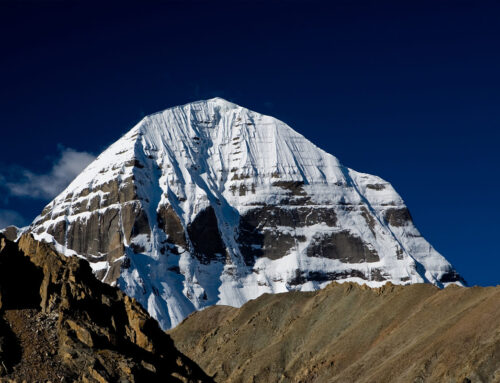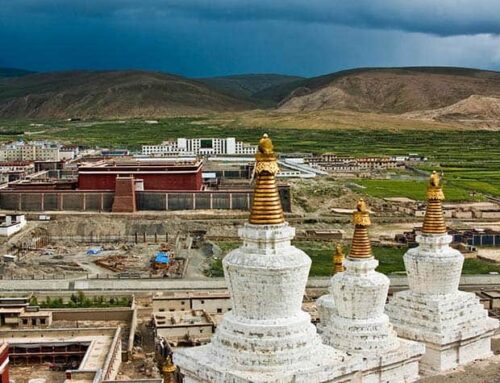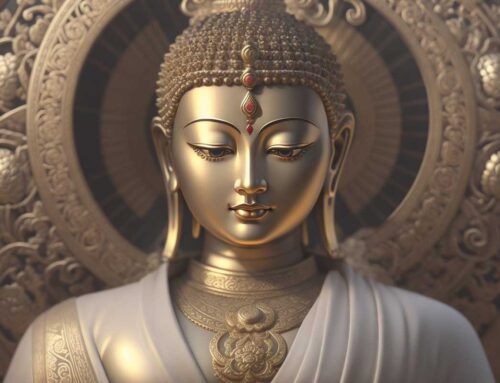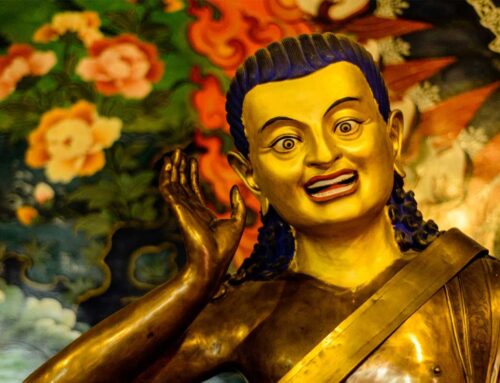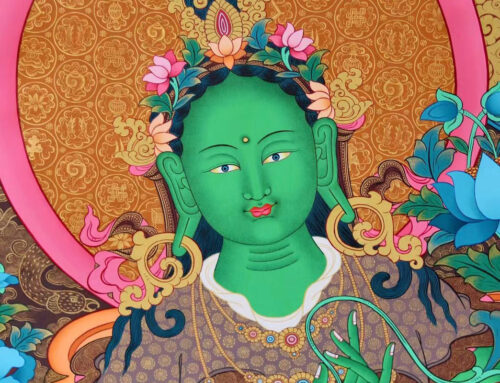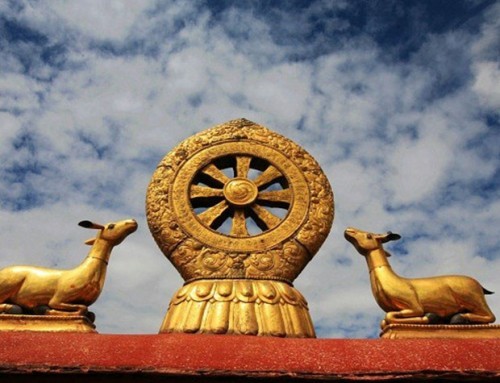In the mystical land of Tibet, where the lofty Himalayan peaks touch the heavens, a profound practice called Kora holds great significance for Tibetan Buddhists. Kora, also known as circumambulation, involves walking in a clockwise direction around sacred sites, such as mountains, monasteries, and temples.
In this article, we will delve into the essence of Kora, its rich history, symbolic meanings, popular routes, rituals, benefits, challenges, and its impact on modern-day spirituality.
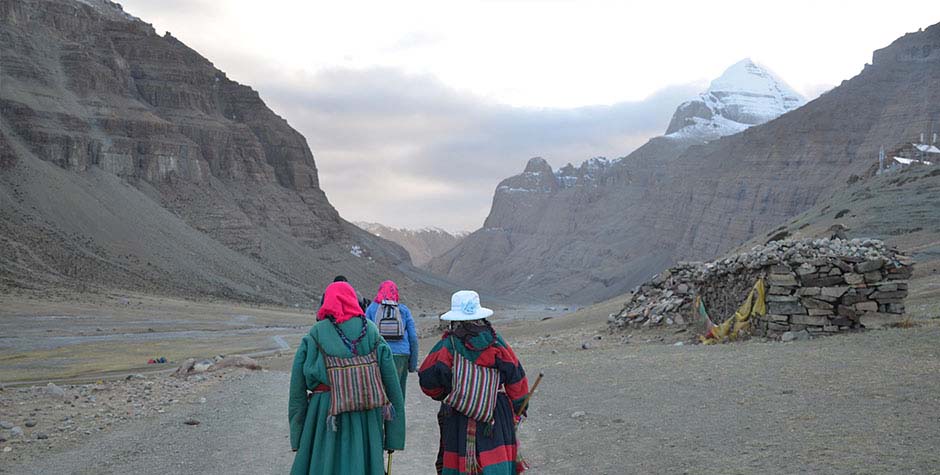
Introduction to Kora
Definition of Kora: Kora (བསྐོར་བ།), derived from the Tibetan word “khor,” means “circumambulation” or “revolution.” It is a sacred ritual of walking around a revered site, typically in a clockwise direction, as a form of devotion, meditation, and spiritual practice.
Significance in Tibetan Buddhist tradition: Kora holds deep religious and cultural significance in Tibetan Buddhism. It is believed to purify negative karma, accumulate merit, and bring spiritual transformation to practitioners.
Origin and History of Kora
Tibetan Buddhist beliefs and practices formed the foundation for Kora. Tibetan Buddhism incorporates elements of Bon, an indigenous pre-Buddhist religion in Tibet, which also had pilgrimage traditions. With the advent of Buddhism in Tibet in the 7th century, Kora practices intertwined with Buddhist teachings.
The introduction of Kora in Tibet is attributed to the famous Tibetan king Songtsen Gampo. He is believed to have ordered the construction of numerous sacred sites and initiated the tradition of circumambulating them. Over the centuries, Kora evolved and adapted, influenced by different Buddhist sects and local customs, resulting in a diverse range of Kora routes across Tibet.
Purpose and Symbolism of Kora
The primary purpose of Kora is to deepen one’s spiritual connection and progress along the path to enlightenment. It serves as a means to cultivate mindfulness, devotion, and compassion. By engaging in Kora, practitioners seek to purify their minds, accumulate positive merit, and overcome obstacles on their spiritual journey.
The circular path of Kora holds profound symbolism. It represents the cyclical nature of existence, the eternal cycle of birth, death, and rebirth. Each step on the Kora is a metaphorical step closer to liberation from the cycle of suffering.
Different Types of Kora or Circumambulation
While you are in Tibet. You will find Tibetan people circumambulation around Temple, Stupas, Monasteries and even the Entire mountain or Hill. The Object of Circumambulation of always of the higher spiritual importance. The Tibetan word for the pilgrimage is called Nekhor, གནས་སྐོར། Meaning circumambulation around the Object of veneration or Ne གནས་.
Ne generally falls into the following categories as is the Different type of Circumambulations.
1) Natural Sites:
We will find Tibetan people circulating the Natural sites like Spring, Lake, Rock, Cave and Sky Burial Sites. The most momentous of all the Ne or site is the holy mountains and lakes like Namtso lake, Mount Kailash. The kora associated with the natural site can be both easier and arduous long trek like Mount Kailash Kora which includes long distances, high passes and difficult terrains.
2) Man-Made Sites:
The second categories of the circumambulation site are the Made Site. It composes all the palaces, Temple, Monastery or even the entire city or town. The holiest made site for the circumambulation is the Jokhang Temple as it is considered the holiest of all temples or Monasteries in the inner Himalayas for it houses the holy statue of Sakyamuni Buddha. You will also people in Lhasa going to Kora around the Barkhor and Lingkhor ( the entire Old Town of Lhasa).
3) Holy person
All the holy people or Lamas are considered as important as the Buddha himself. When we recite the three refuge prayer ( the core prayer of any Buddhism). We in Tibetan Buddhism place our Guru or teacher even more important than buddha. So the Holy person becomes a very important Ne for Circumambulations. So where ever the holy lama’s or Holy person is residing You will find us make circumambulation around it.
Popular Kora Routes in Tibet
Tibet boasts several revered Kora routes, each associated with sacred sites and spiritual significance. Let us explore some of the most prominent ones:
1. Mount Kailash Kora: Located in western Tibet, Mount Kailash is considered the most sacred mountain in Tibetan Buddhism. The Kora around Mount Kailash is known as the ultimate pilgrimage, believed to bring immense spiritual merit and liberation.
2. Jokhang Temple Kora: Situated in Lhasa, the capital of Tibet, Jokhang Temple is a significant pilgrimage destination. The Kora around the temple is an integral part of the spiritual journey for Tibetan Buddhists. This Kora is also kown as Barkhor.
3. Potala Palace Kora: The iconic Potala Palace in Lhasa, the residence of the sussessive Dalai Lamas, holds historical and spiritual importance. The Kora around the palace offers panoramic views of Lhasa and is cherished by both pilgrims and tourists.
Rituals and Practices During Kora
Preparing for a Kora involves physical, mental, and spiritual preparations. Pilgrims often prostrate, make offerings, and chant sacred mantras as they walk the circular path. The rhythm of footsteps blends with the recitation of prayers, creating a meditative atmosphere.
Prostrations are a common practice during Kora, where practitioners lie face down, stretch their bodies, and touch their foreheads to the ground as an act of reverence. This physical act symbolizes humility, surrender, and the cultivation of a compassionate heart.
In addition to prostrations, devotees may also carry prayer wheels, spin prayer beads, or hold prayer flags, further enhancing the spiritual ambiance of the Kora.
Benefits and Rewards of Kora
Participating in Kora offers various benefits and rewards to practitioners:
Purification of negative karma: Kora is believed to cleanse past negative actions, thoughts, and emotions, thereby purifying one’s karma and paving the way for spiritual growth.
Accumulation of merit: Each step taken during Kora is considered an opportunity to accumulate positive merit, leading to favorable conditions for future lives and spiritual progress.
Spiritual transformation: The intense devotion, contemplation, and immersion in the spiritual practice of Kora have the potential to bring about profound transformations in the practitioner’s mindset and consciousness.
Challenges and Obstacles of Kora
While Kora is a spiritually fulfilling practice, it is not without challenges and obstacles. Pilgrims undertaking Kora face physical hardships, such as high altitudes, treacherous terrains, and extreme weather conditions. The arduous journey requires endurance, resilience, and a strong determination to overcome these obstacles.
Moreover, Kora presents mental and emotional challenges as well. The mind may wander, distractions may arise, and doubts may cloud the practitioner’s focus. Maintaining unwavering devotion, concentration, and mindfulness throughout the Kora requires inner strength and discipline.
Kora as a Pilgrimage Destination
The allure of Kora extends beyond Tibetan Buddhists; it attracts pilgrims and spiritual seekers from all walks of life, regardless of their religious background. The pilgrimage routes have become hubs of cultural exchange, where people from diverse backgrounds come together in search of meaning, connection, and personal transformation.
The influx of pilgrims has brought economic and cultural benefits to local communities. The growth of infrastructure, accommodations, and services has provided employment opportunities and contributed to the economic development of regions associated with Kora routes.
Preservation of sacred sites is of paramount importance to ensure the sanctity and integrity of the Kora experience. Efforts are made to maintain and restore ancient monasteries, temples, and natural landscapes to safeguard the spiritual heritage embedded in these sacred sites.
Modern-Day Adaptations of Kora
In the age of technological advancements, Kora has undergone modern adaptations to cater to the needs of contemporary practitioners. Virtual Kora experiences now exist, allowing individuals to engage in circumambulation digitally, bringing the essence of Kora to those unable to undertake physical pilgrimages.
Kora practices have also transcended the borders of Tibet, spreading to different parts of the world. Buddhist centers and monasteries outside Tibet offer Kora opportunities, enabling individuals to experience the spiritual essence and connect with the profound teachings of Tibetan Buddhism.
Western spiritual seekers have been drawn to Kora as a transformative practice that resonates with their own spiritual quests. The circular path of Kora serves as a metaphorical journey inward, a quest for self-discovery, and an opportunity to explore the depths of consciousness.
Conclusion of Kora
Kora, the sacred practice of circumambulation, is a cherished tradition in Tibetan Buddhist culture. It holds profound spiritual significance, symbolizes the eternal cycle of existence, and offers a transformative experience for pilgrims. As pilgrims walk the circular paths, they seek purification, accumulate merit, and embark on a journey toward spiritual awakening. Kora routes in Tibet, such as Mount Kailash, Jokhang Temple, and Potala Palace, attract devotees and curious travelers alike, contributing to the cultural and economic vitality of the region. In the modern era, virtual Kora experiences and the global spread of Kora practices have made this sacred tradition accessible to a wider audience. Whether walking the physical path or exploring the inner realms of consciousness, Kora remains a powerful and revered practice that continues to inspire and uplift countless spiritual seekers
FAQs on Kora
How long does a typical Kora take to complete?
The duration of a Kora varies depending on the specific route and individual factors. Some Kora routes can be completed in a few hours, while others may take several days or even weeks.
Can anyone participate in a Kora?
Yes, anyone with the physical ability and sincere intention can participate in a Kora. It is open to people of all ages, backgrounds, and religious beliefs.
Are there any age restrictions for Kora?
There are no strict age restrictions for Kora. However, certain Kora routes may involve challenging terrain and high altitudes, requiring a certain level of physical fitness and endurance.
What should one wear during a Kora?
It is advisable to dress modestly and respectfully during a Kora. Comfortable and layered clothing, suitable for the weather conditions, along with sturdy walking shoes, is recommended.
How can I prepare myself physically and mentally for Kora?
Physical preparation includes regular exercise, building stamina, and acclimatizing to high altitudes if necessary. Mental preparation involves cultivating mindfulness, devotion, and a positive mindset. It can be helpful to engage in meditation and familiarize oneself with the teachings and practices associated with Kora.
About Tibet Travel & Tours
Tibet Travel & Tours is a local travel agency in Tibet that offers unique and authentic experiences to travelers from all around the world. As a leading tour operator in Tibet, we provide high-quality Tibet Travel services that are tailored to our clients’ needs and preferences.
Our team of experienced and knowledgeable professionals strives to ensure that our clients have a hassle-free and memorable trip in Tibet. We specialize in various types of tours, including cultural tours, trekking and hiking tours, and adventure tours.
Our commitment to providing exceptional service has earned us a reputation as one of the best local travel agencies in Tibet. Contact us today to plan your unforgettable trip to Tibet.
Explore Tibet with a local Tibetan Travel Agency
If you’re looking to explore Tibet, starting your journey with a reputable Tibetan travel agency in Tibet is crucial. Tibet Travel & Tours is a great choice to begin your adventure with their extensive knowledge of the region and commitment to responsible tourism.
Their Tibet tour packages cater to a range of interests and budgets, making it easy to plan a trip that suits your needs. Before embarking on your tibet tour, it’s essential to have the right Tibet travel information and necessary documents, including a Tibet travel permit.
The Tibet Travel Planner provided by i-Tibet travel is an excellent resource to plan your trip, including tips on what to pack, where to stay, and what to see.
For beginners, the “About Tibet” guide provided by i-Tibet travel offers a comprehensive overview of the region’s history, culture, and top attractions. So, start your Tibet travel plan here with i-Tibet travel and discover the magic of Tibet for yourself.

